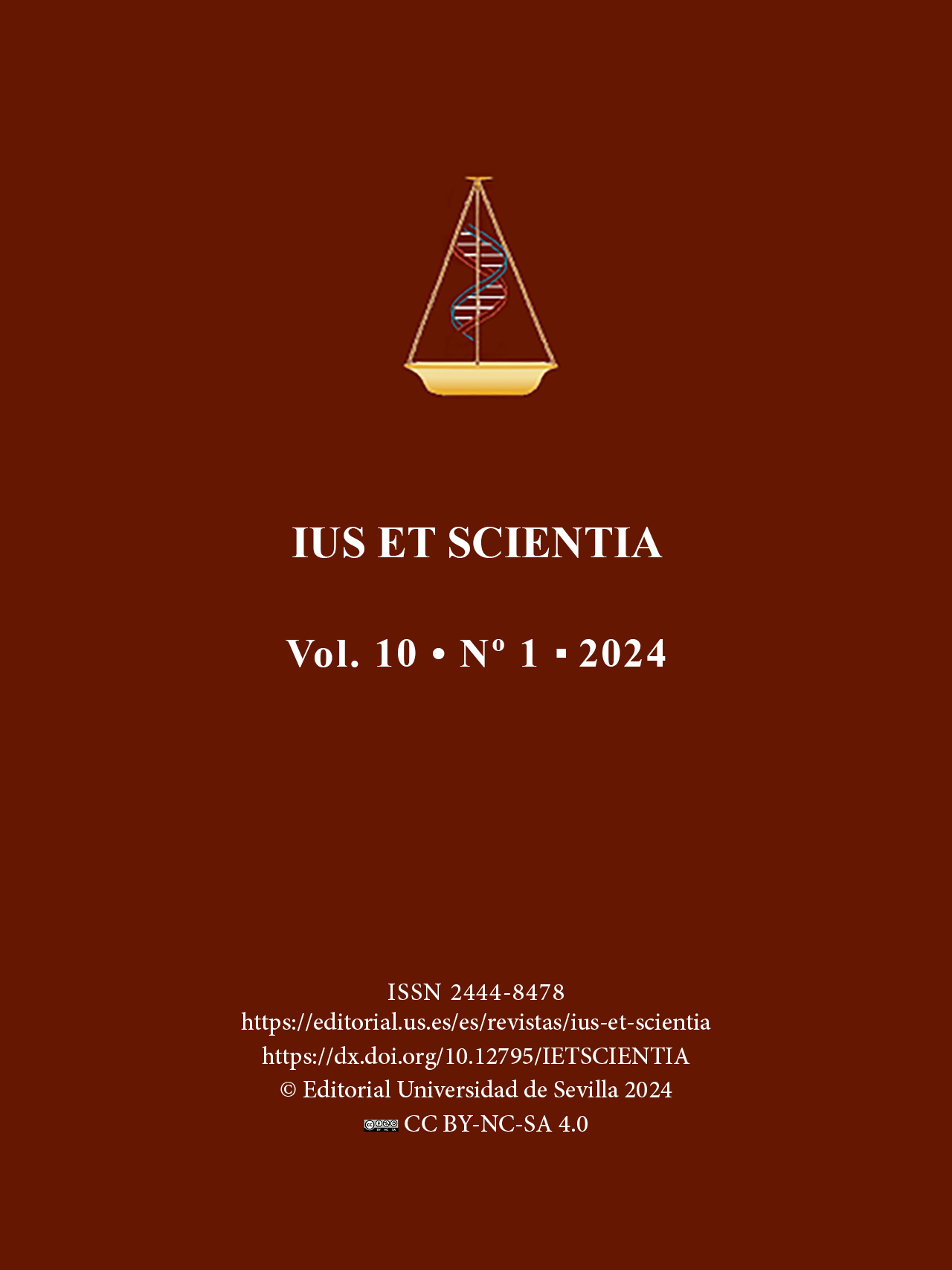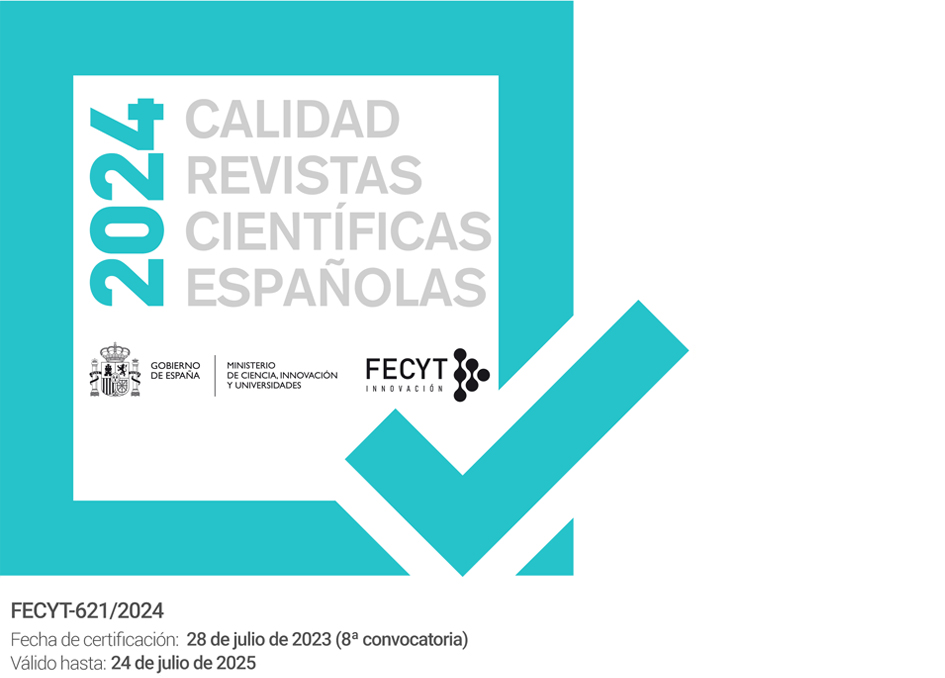Revelando lo no reportado: extracción de eventos basada en IA para analizar la representación estadounidense de los delitos de odio
DOI:
https://doi.org/10.12795/IESTSCIENTIA.2024.i01.08Palabras clave:
Delitos de odio, Informes oficiales, Aproximaciones estadísticas, Extracción de eventos, Aprendizaje multi-instancia, Inteligencia artificial (IA)Resumen
Los informes oficiales de delitos de odio en los Estados Unidos están subestimados en comparación con la cantidad real de incidentes de este tipo. Además, a pesar de las aproximaciones estadísticas, no hay informes oficiales de muchas ciudades estadounidenses sobre incidentes de odio. Aquí, mostramos inicialmente que la extracción de eventos y el aprendizaje multi-instancia, basados en inteligencia artificial (IA), aplicados a un conjunto de artículos de noticias locales, pueden predecir casos de delitos de odio. Luego utilizamos el modelo entrenado de IA para detectar incidentes de odio en ciudades para las cuales el FBI carece de estadísticas. Finalmente, entrenamos modelos de IA para predecir homicidios y secuestros, comparamos las predicciones con los informes del FBI y establecemos que, de hecho, los incidentes de odio están subestimados en comparación con otros tipos de delitos en la prensa local. Es importante destacar que esta información no ha sido extraída de este lugar.
Descargas
Citas
ABA CATOIRA, A. M. (2015). «Protección de las libertades de expresión y sanción del discurso del odio en las Democracias Occidentales.» EDaSS, 199-221.
ABADI, M., BARHAM, P., CHEN, J., CHEN, Z., DAVIS, A., DEAN, J., ... & IRVING, G. (2016). Tensorflow: A system for large-scale machine learning. In 12th {USENIX} Symposium on Operating Systems Design and Implementation ({OSDI} 16), pages 265–283.
CHEN, Y., XU, L., LIU, K., ZENG, D., & ZHAO, J. (2015). Event extraction via dynamic multi-pooling convolutional neural networks. In Proceedings of the 53rd Annual Meeting of the Association for Computational Linguistics and the 7th International Joint Conference on Natural Language Processing (Volume 1: Long Papers), volume 1, pages 167–176.
COHEN, J. (1968). Weighted kappa: Nominal scale agreement provision for scaled disagreement or partial credit. Psychological bulletin, 70(4), 213.
FBI. (2020). Hate crime statistics, 2019. https://ucr.fbi.gov/hate-crime/2019. Acceso: 03-01-2024.
FIELD, A. P., & WILCOX, R. R. (2017). Robust statistical methods: A primer for clinical psychology and experimental psychopathology researchers. Behaviour research and therapy, 98, 19–38.
GONZÁLEZ Gaya, C., Domingo Navas, R., & Sebastián Pérez, M. Á. (2013). «Técnicas de mejora de la calidad.» UNED Cuadernos.
GRAVES, A., & SCHMIDHUBER, J. (2005). Framewise phoneme classification with bidirectional lstm and other neural network architectures. Neural Networks, 18(5-6), 602–610.
HOCHREITER, S., & SCHMIDHUBER, J. (1997). Long short-term memory. Neural computation, 9(8), 1735–1780.
HUANG, Z., XU, W., & YU, K. (2015). Bidirectional lstm-crf models for sequence tagging. arXiv preprint arXiv:1508.01991.
JACOBS, J. B., POTTER, K., et al. (1998). Hate crimes: Criminal law & identity politics. Oxford University Press on Demand.
KAUFMAN, G. A. (2015). «Odium dicta: Libertad de expresión y protección de grupos discriminados en Internet.» Consejo Nacional para Prevenir la Discriminación.
KENNEDY, B., KOGON, D., COOMBS, K., HOOVER, J., PARK, C., PORTILLO-WIGHTMAN, G., ... & DEHGHANI, M. (2018). A typology and coding manual for the study of hate-based rhetoric. PsyArXiv.
LEWIS, D. D., & GALE, W. A. (1994). A sequential algorithm for training text classifiers. In SIGIR94, pages 3–12. Springer.
MANNING, C., SURDEANU, M., BAUER, J., FINKEL, J., BETHARD, S., & MCCLOSKY, D. (2014). The stanford corenlp natural language processing toolkit. In Proceedings of 52nd annual meeting of the association for computational linguistics: system demonstrations, pages 55–60.
MASUCCI, M., & LANGTON, L. (2017). Hate crime victimization, 2004-2015. Washington, DC, US Department of Justice Office of Justice Programs Bureau of Justice Statistics.
MELLGREN, C., ANDERSSON, M., & IVERT, A.-K. (2017). «For Whom Does Hate Crime Hurt More? A Comparison of Consequences of Victimization Across Motives and Crime Types.» SAGE: Journal of Interpersonal Violence, 36.
MÜLLER, K., & SCHWARZ, C. (2020). «Fanning the Flames of Hate: Social Media and Hate Crime.» SSRN Electronic Journal.
OSCE. (2021). «Hate Crime Data.» Disponible en https://hatecrime.osce.org.
PENNINGTON, J., Socher, R., & MANNING, C. (2014). Glove: Global vectors for word representation. In Proceedings of the 2014 conference on empirical methods in natural language processing (EMNLP), pages 1532–1543.
PEZZELLA, F. S., FETZER, M. D., & KELLER, T. (2019). The dark figure of hate crime underreporting. American Behavioral Scientist, page 0002764218823844.
QUESADA ALCALÁ, C. (2015). «La labor del Tribunal Europeo de Derechos Humanos en torno al discurso de odio en los partidos políticos.» Revista Electrónica de Estudios Internacionales, (30).
WANG, W., NING, Y., RANGWALA, H., & RAMAKRISHNAN, N. (2016). A multiple instance learning framework for identifying key sentences and detecting events. In Proceedings of the 25th ACM International on Conference on Information and Knowledge Management, pages 509–518. ACM.
YANG, Z., YANG, D., DYER, C., He, X., SMOLA, A., & HOVY, E. (2016). Hierarchical attention networks for document classification. In Proceedings of the 2016 Conference of the North American Chapter of the Association for Computational Linguistics: Human Language Technologies, pages 1480–1489.
Publicado
Cómo citar
Número
Sección
Licencia
Derechos de autor 2024 Daniel Suárez Alonso

Esta obra está bajo una licencia internacional Creative Commons Atribución-NoComercial-CompartirIgual 4.0.
Aquellos autores/as que tengan publicaciones con esta revista, aceptan los términos siguientes:- Los autores/as conservarán sus derechos de autor y garantizarán a la revista el derecho de primera publicación de su obra, el cuál estará simultáneamente sujeto a la Licencia de reconocimiento de Creative Commons que permite a terceros compartir la obra siempre que se indique su autor y su primera publicación esta revista.
- Los autores/as podrán adoptar otros acuerdos de licencia no exclusiva de distribución de la versión de la obra publicada (p. ej.: depositarla en un archivo telemático institucional o publicarla en un volumen monográfico) siempre que se indique la publicación inicial en esta revista.
- Se permite y recomienda a los autores/as difundir su obra a través de Internet (p. ej.: en archivos telemáticos institucionales o en su página web) antes y durante el proceso de envío, lo cual puede producir intercambios interesantes y aumentar las citas de la obra publicada. (Véase El efecto del acceso abierto).




